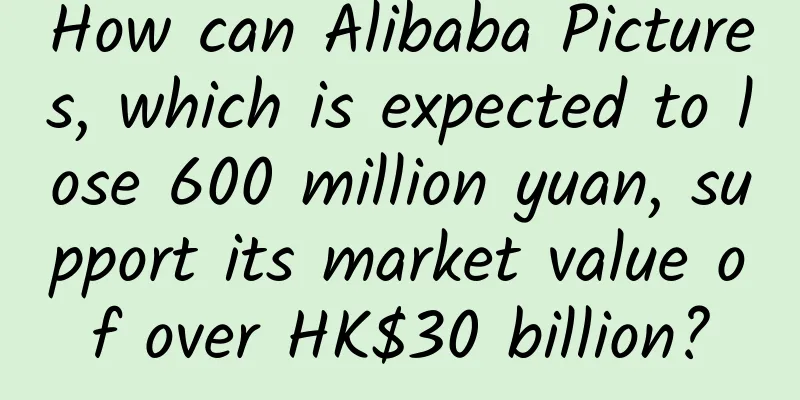The past and present life of a piece of tea - Tea Horse Road

|
Author of this article: Lv Weitao, Curator at the National Museum of China Zhang JinMember of the Intangible Cultural Heritage Working Committee of China Arts and Crafts Association A magical leaf connected the Asian and European continents, opened up the Tea Road for commodity trade and mutual learning of civilizations, and pioneered the Tea Horse Road. This tea road started from Chong'an, Fujian, China (now Wuyishan City), passed through Kulun, Mongolia (now Ulaanbaatar), and reached Kyakhta, Russia. The tea road continued to extend in Russia, passing through cities such as Moscow and St. Petersburg, and then spread to Central Asia and other European countries, making the total length of the tea road more than 13,000 kilometers. The Tea Horse Road was a long-distance trade route between ancient China and Europe with tea as the main commodity. It was another important international trade route that emerged in Eurasia after the decline of the Silk Road. This tea road has a wide range of influence on world civilization. Today, countries around the world still use the "foreign" pronunciation of tea that originated in China, such as the English slang "tea" pronounced "cha", and the English word "Tea" comes from the pronunciation of "tea" in Xiamen dialect of Fujian, China. The initial formation of the Tea Horse Road was directly related to the living needs of nomadic people in the Mongolian grasslands and Siberia. They have lived in cold areas with high latitudes for a long time. Their daily diet is mainly meat and milk. They lack fruits and vegetables, and it is difficult to supplement the various trace elements needed by the human body. Because tea can relieve greasiness, refresh the mind, increase calories, and supplement trace elements, it has become a necessity in their lives and is known as the "Angel of Health". A successful cultural export: tea drinking fashion According to historical records, tea first entered Russia as a gift to the royal family, which shows how precious tea was in ancient times. In 1618, an envoy from the Ming Dynasty of China brought several boxes of tea, passed through Mongolia and Siberia, and presented the tea to the Russian Tsar after an 18-month journey. Since no one in Russia drank tea at that time, it did not attract much attention. In 1638, a Russian nobleman obtained two large barrels of Wuyi Mountain tea from a Mongolian merchant and gave them to the Tsar as a gift. The Tsar was overjoyed after tasting the tea. As a result, the fame of Wuyi tea quickly spread among the Russian upper class. At that time, tea was very expensive and only the princes, nobles and local officials could afford it. It was not until the 1750s that the production of Wuyi tea increased and gradually entered the market. The once mysterious oriental drink was not only loved by the upper class, but also began to appear on the tables of ordinary families. Drinking tea gradually became a fashion in Russia. The rise of the tea drinking trend also prompted the Russians to try to grow tea trees and make tea. They opened tea gardens in Georgia very early. Georgia is located in the central and western part of the Caucasus, facing the Black Sea to the west. It has a subtropical Mediterranean climate, which is warm, humid, and rainy. The ecological environment is excellent, and the conditions for tea planting are unique. In 1893, Russian tea merchant Popov saw the huge potential of tea in the European market, so he hired tea master Liu Junzhou from Guangdong, China, and led a group of technical workers to Georgia to try to plant tea trees and teach tea planting and tea making techniques. After three years, the first batch of tea was successfully produced. Liu Junzhou worked in Popov's manor for seven years, and the tea he planted and produced won a gold medal at the 1900 Paris World Industrial Exposition in France. He himself was also awarded the "Stanislav Third Class Medal" by the Tsarist Russian government in 1911 for his outstanding contributions. From Shanxi to Kyakhta: Witnessing the Rise of the Compound The tea imported into Russia all came from southern China, but the business operators were Shanxi merchants, who were not tea-producing provinces. There is a plot in the TV series "Qiao Family Courtyard": the protagonist Qiao Zhiyong got a tea road map from a beggar. With the guidance of this map, he went south to Wuyi Mountain to collect and sell tea. After going through hardships, he expanded his business to Kyakhta, Russia, and made a fortune. It can be said that without the Tea Horse Road, there would be no "Qiao Family Courtyard". Shanxi Province is located in the middle of the Mongolian grassland nomadic economic zone and the Central Plains agricultural and handicraft economic zone. It has been an important channel for the exchange of materials between the north and the south since ancient times. The business activities of Shanxi merchants have always been very active. Since the reign of Emperor Kangxi of the Qing Dynasty, the Mongolian merchants, mainly Shanxi merchants, provided food and fodder for the Qing Dynasty troops stationed in the border areas, obtained the right to do border trade in the border areas, and engaged in a large number of grassland barter businesses, exchanging tobacco, tea, grain, cotton, salt and iron products for fur and livestock. In the mid-18th century, tea had become an indispensable necessity for the meat-eating Mongolians and Russians. Shanxi merchants learned about their living habits during their long-term border trade activities on the grasslands and began to engage in tea business. The wealthy Shanxi merchants used hundreds of ticket houses and money houses along the tea road to control the purchase, processing, storage, transportation and sales of major tea-producing areas in China. This not only affected the three major Chinese tea markets of Hankou, Fuzhou and Jiujiang, but also directly influenced the prices of tea trade in Europe at that time. Shanxi merchants often go deep into the tea-producing provinces in Jiangnan, China to purchase tea, and invest in local factories to use wooden flat presses and iron wheel hand-cranked presses to process and produce brick tea. Brick tea is tea that looks like a brick. It is a more representative type of compressed tea. It is made of tea leaves, tea stems, and sometimes tea powder. This kind of tea is very easy to store and transport over long distances. Every spring, Shanxi merchants hired thousands of farmers to pick tea and process brick tea, and brick tea workshops became a prosperous handicraft industry in the south of the Yangtze River. The "Chuan" brand green brick tea produced by Shanxi merchants in Yangloudong, Hubei, and the "Qianliang Tea" produced in Anhua, Hunan, are still best-sellers in the Mongolian and Russian markets. At first, Shanxi merchants mainly bought tea from Wuyi Mountain in Fujian. The tea market was set up in Xiamei Town, Chong'an, Fujian, and then transported to Hankou, and then concentrated in the north. During the Xianfeng period of the Qing Dynasty, this tea route was interrupted for several years due to the war of the Taiping Rebellion. The shrewd Shanxi merchants then switched to transporting tea from Hunan and Hubei. In short, these teas from southern China were first transported to Kyakhta by Shanxi merchants over mountains and rivers, and then resold to major European cities by Russian merchants. The Kyakhta trade brought huge profits to Shanxi merchants, while Russian merchants resold tea to the European market for even greater profits. At the same time, the Kyakhta trade also brought considerable tariff revenue to the Russian government. In 1760, tariffs collected from Kyakhta accounted for 24% of Russia's national tariff revenue, and rose to 38.5% in 1775. From 1821 to 1850, Russia's trade with China in Kyakhta accounted for 40%-60% of Russia's total foreign trade, reaching more than 60% at its highest point, while 16% of China's exports and 19% of its imports were conducted here. During this period, Sino-Russian trade was basically equal and mutually beneficial, and the trade between the two sides was also fair trade, with a surplus every year, and a lot of silver flowed from Russia to China. In 1857, Marx said in "Russia's Trade with China": "In Kyakhta, the main commodity provided by the Chinese is tea. The Russians provide cotton fabrics and furs. In the past, the average annual sales of tea to the Russians in Kyakhta did not exceed 40,000 boxes, but in 1852 it reached 175,000 boxes, and the total value of the goods traded reached a huge amount of 15 million US dollars... Due to the growth of this trade, Kyakhta in Russia has developed from an ordinary market into a fairly large city." A war between British and Russian tea merchants on the Tea Horse Road After the Second Opium War, Hankou was opened as a trading port. The Russians, with their many years of experience in trade with China, particularly valued Hankou's tea market. In 1862, they signed the Sino-Russian Land Trade Regulations with the Qing government, which gave Russian merchants the right to directly purchase and process tea in tea-producing areas in southern China. As a result, Russian merchants came into competition with British merchants who also wanted to monopolize the Hankou tea market. Russian merchants came to Hankou and began to recruit people to set up factories in nearby tea-producing areas to make brick tea. From 1863 to 1873, three tea factories, Shunfeng, Xintai and Fuchang, were opened in Yangloudong. In order to compete with British merchants for tea sources, they purchased tea at a price several percentage points higher than that of the British, processed it locally, and then transported it to Russian trading companies in Hankou for re-export and sale. In order to further compete with British merchants, Russian merchants moved the above three tea factories to Hankou in 1874. The Shunfeng Tea Factory was located at the lower river beach of the British Concession, the Xintai Tea Factory was located at the intersection of Lanling Road, and the Fuchang Tea Factory was located at the intersection of Nanjing Road. In 1893, the Baichang Tea Factory was established at the intersection of Shanghai Road. The Shunfeng Tea Factory also built the Shunfeng Tea House Wharf on the riverside, which was the first factory-specific wharf in Hankou. At the same time, Russian merchants switched to using steam engines and hydraulic presses to make brick tea, which became the first batch of modern industries in Hankou. Among them, Taifeng Tea Factory was one of the earliest foreign-funded enterprises in China to use machine production, marking the beginning of modern industry in Hankou. The workers employed by the Russian tea factory were the earliest batch of modern industrial workers in Hankou. In 1861, 80,000 dan of tea were exported from Hankou Port, and in 1862, 216,000 dan. The amount increased year by year. From 1871 to 1890, the annual export reached more than 2 million dan. During this period, China's tea exports monopolized 86% of the world's tea market, and tea exported from Hankou accounted for 60% of the country's tea exports. Tea-carrying fleets shuttled back and forth into Hankou Port, and tea ships anchored on the river stretched for more than 30 miles. In 1890, Russian Crown Prince Nicholas (the last Tsar Nicholas II) set foot on the land of Hankou during his trip to China. Zhang Zhidong, then Governor-General of Huguang, hosted the future Russian Tsar at Qingchuan Pavilion. When attending the 25th anniversary celebration of Xintai Tea Factory, Russian merchants reported to Nicholas that the tax revenue of Hankou brick tea accounted for one-third of the entire fiscal revenue of the Tsarist Russia. Nicholas praised three great things: the Tea Road starting from Hankou is a great tea road, Hankou is a great oriental tea port, and Russian tea merchants in Hankou are great merchants. From then on, the reputation of "Oriental Tea Port" was widely spread among Chinese and foreign tea merchants. In the Anglo-Russian tea trade war, British merchants were eventually defeated and evacuated the Hankou tea market, moving to India and Sri Lanka to open up the Indian black tea market. There are three main reasons for the success of Russian merchants: First, they did not buy finished brick tea from Chinese tea warehouses, but opened factories in tea-producing areas, directly purchased raw tea from tea farmers, and then processed it themselves. This reduced the number of intermediate links and reduced costs. Second, they used advanced steam engines and hydraulic machines to make tea, with good product quality and high production efficiency. Third, they developed a new tea transportation route, changing the land route to the sea route, and the tea was shipped from the Yangtze River to the Far East and Odessa on the Black Sea coast. This reduced freight costs and increased profits. The once busy Kyakhta gradually lost its luster. Where does the Tea Horse Road go? The Belt and Road Initiative is reborn However, after the October Revolution in Russia, the Sino-Russian tea trade gradually declined, and several Russian tea factories in Hankou were closed or resold one after another. Among them, the Xintai Tea Factory was taken over by British businessmen and renamed the Pacific Brick Tea Factory. In addition, under the influence of the tariff barrier policy adopted by the newly established Soviet government on Chinese tea imports, Russian businessmen gradually withdrew from the Hankou tea market, which led to a sharp depression in the Hankou tea trade. What was even more fatal was that the status of Hankou Tea Port was seriously threatened by the rise of tea from India and Ceylon (now Sri Lanka) in the late 19th century. British merchants, the largest buyers of tea in Hankou, turned to buying Indian and Ceylon tea because South Asia was a British colony and the transportation distance between the two was relatively short. Thus, the situation in which Russian merchants monopolized the Hankou tea market for more than half a century came to an end, and the Tea Road, which lasted for more than two centuries, finally faded out of the historical stage. Today, as China strives to promote the construction of the "Belt and Road", the Tea Horse Road between China and Europe will be reborn. This is not only a continuation of history, but also a development and innovation in the new era; it is not only a need for a new economic cooperation paradigm and geopolitics, but also a need for cultural exchanges and mutual learning of civilizations. |
<<: Unexpectedly, the fall of ancient Chinese feudal dynasties was related to volcanic eruptions.
>>: Relay satellites: making manned space flight and deep space exploration more convenient
Recommend
Do you know how to wash and maintain these quilts?
How to wash and maintain the quilt The autumn rai...
Artemis Project: Humans will return to the moon and build permanent settlements
Author | Feng Ziyang Audit | Huang Jian Editor | ...
Workplace Depression Help Guide: How to Maintain Mental Health at Work?
Depression knows no particular situation, and it ...
How much does it cost to develop a vegetable delivery mini program? How much does it cost to develop a store mini program?
Food is the primary need of the people. Food is v...
Xiaomi Mi 8 SE review: Perhaps the best value quasi-flagship
On May 31, Lei Jun walked onto the stage slowly w...
Heavy rains have hit many parts of my country, and dead earthworms can be seen everywhere! Will the population decrease?
Since the beginning of summer in 2024, many parts...
How to seize the benefits of WeChat mini programs?
Any project that wants to make money must grasp t...
How to write copy that matches your brand positioning?
A few days ago, we held a small activity on the f...
Who can gain 10 million followers per month? | Short video top 100 account data report
We analyzed the 100 top accounts with the most fo...
A must-have for promoters’ year-end reports: big data analysis & production tools, super comprehensive!
sx The following are some "must-have tools&q...
Drinking water with your butt? I didn’t expect you to be such a beetle…|Nature Trumpet
Welcome to the Nature Trumpet column. In the past...
Is the investment cost of Baotou Tourism Supplies Mini Program high? Baotou Tourism Products Mini Program Investment Fees List
How much does it cost to attract investment for t...
Many manufacturers are working on multi-core, multi-mode and multi-frequency: Qualcomm is in danger
After the opening of 4G, with the advancement of C...
Feixue Wuqing "22 Lectures to Master the Go Language" - Go Language Evangelist's Introductory Notes
Introduction to the training course content: Go ha...
How much does it cost for a merchant in Diqing to create an appointment booking app?
According to industry insiders, mini programs wil...









